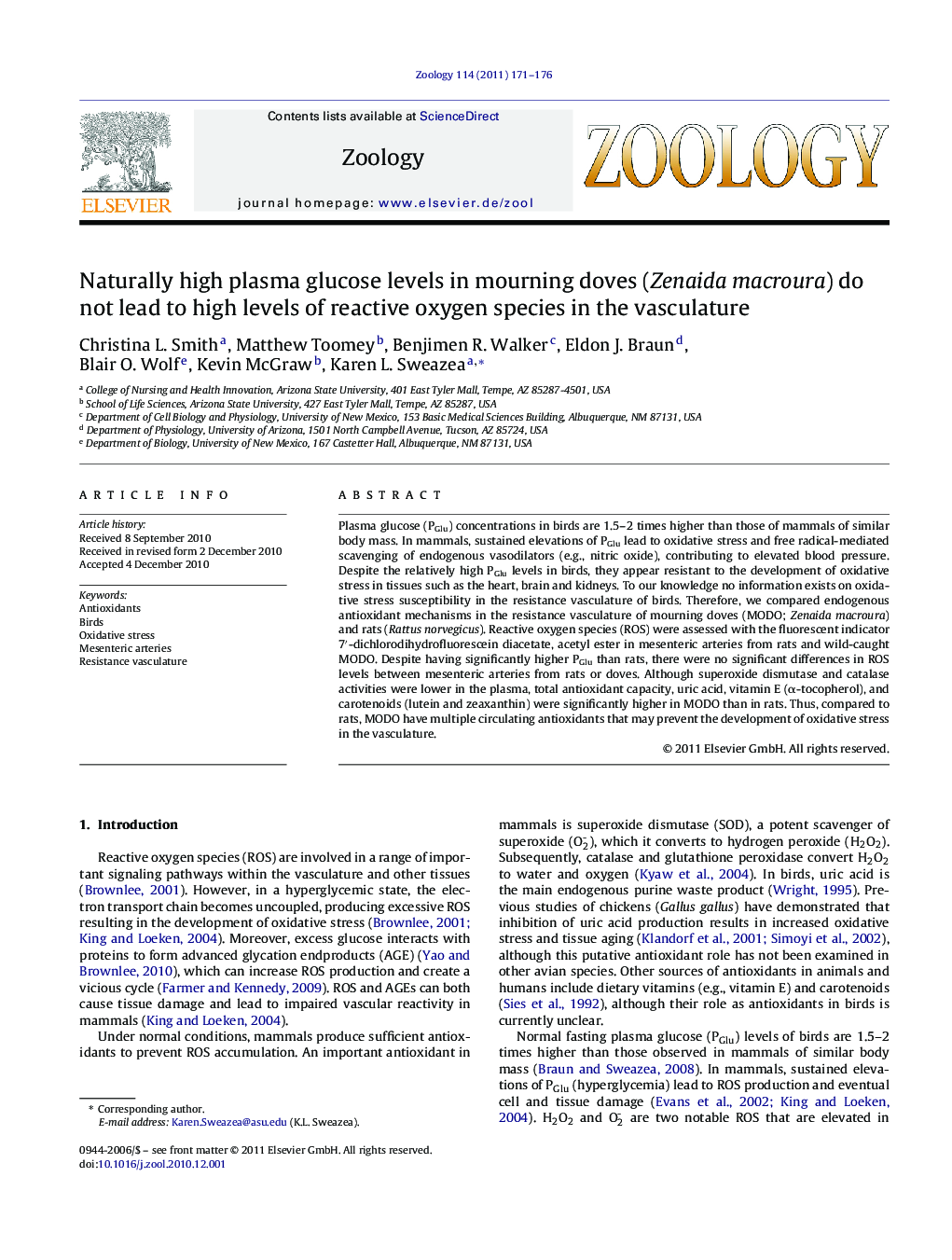| Article ID | Journal | Published Year | Pages | File Type |
|---|---|---|---|---|
| 2791102 | Zoology | 2011 | 6 Pages |
Plasma glucose (PGlu) concentrations in birds are 1.5–2 times higher than those of mammals of similar body mass. In mammals, sustained elevations of PGlu lead to oxidative stress and free radical-mediated scavenging of endogenous vasodilators (e.g., nitric oxide), contributing to elevated blood pressure. Despite the relatively high PGlu levels in birds, they appear resistant to the development of oxidative stress in tissues such as the heart, brain and kidneys. To our knowledge no information exists on oxidative stress susceptibility in the resistance vasculature of birds. Therefore, we compared endogenous antioxidant mechanisms in the resistance vasculature of mourning doves (MODO; Zenaida macroura) and rats (Rattus norvegicus). Reactive oxygen species (ROS) were assessed with the fluorescent indicator 7′-dichlorodihydrofluorescein diacetate, acetyl ester in mesenteric arteries from rats and wild-caught MODO. Despite having significantly higher PGlu than rats, there were no significant differences in ROS levels between mesenteric arteries from rats or doves. Although superoxide dismutase and catalase activities were lower in the plasma, total antioxidant capacity, uric acid, vitamin E (α-tocopherol), and carotenoids (lutein and zeaxanthin) were significantly higher in MODO than in rats. Thus, compared to rats, MODO have multiple circulating antioxidants that may prevent the development of oxidative stress in the vasculature.
